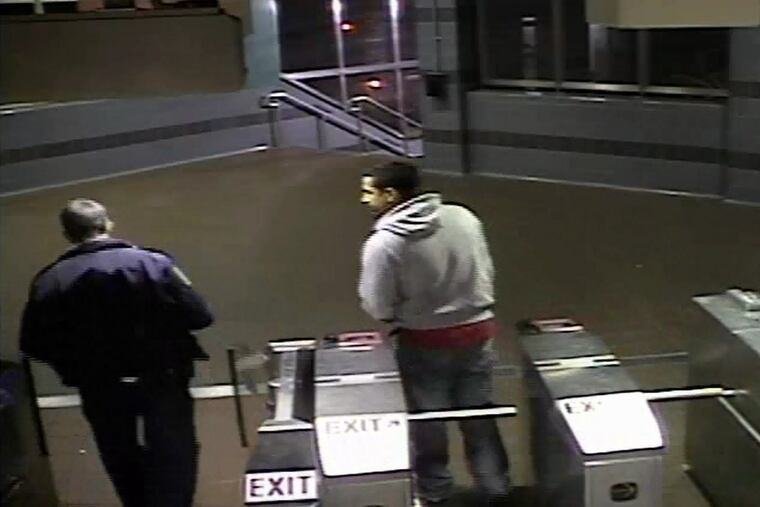Four local cases where police’s nonlethal methods still led to death
The Associated Press documented 1,036 deaths nationwide between 2012 and 2021 that occurred after police used techniques meant to be safer than firearms.

A team of journalists led by The Associated Press has documented 1,036 deaths between 2012 and 2021 that occurred after police used physical force or weapons that are meant to be safer than firearms.
In about 30% of the deaths, the AP reported, police acted to stop people who were injuring others or posing a threat of danger.
But roughly 25% of those who died were threatening no one or, at most, committing minor infractions. The rest involved other nonviolent situations with people who police later said were trying to resist arrest or flee.
AP reporters, using police, court and other public records, identified four such incidents in the Philadelphia region, which involved four different departments.
» READ MORE: Why did more than 1,000 people in the U.S. die after police subdued them with force that isn’t meant to kill?
Tasered in Bala Cynwyd
Police reports obtained by the AP contend that Pennsylvania state troopers in August 2016 pulled over Joshua W. Griffith, 33, of West Chester, while he was driving a rented U-Haul near City Avenue in Bala Cynwyd.
But shortly after stopping the vehicle for a traffic violation, the troopers reported, the driver attempted to flee.
Troopers ran after him and twice used Taser devices on Griffith, who fell to the pavement and struck his head. After a struggle on the ground, police said, he became “unresponsive,” and an EMS team was summoned. Police began chest compressions and also reported administering the anti-opioid medication Naloxone, due to “drug paraphernalia” being discovered at the scene.
Griffith was hospitalized, but declared brain-dead five days later, according to a coroner’s report.
The cause of death was ultimately listed as complications from the use of a “electro muscular disruption device” — such as a Taser. Griffith’s family later filed a wrongful-death lawsuit against state police, which was settled for an undisclosed sum.
Haddon Township ‘psychological emergency’
In September 2012, a Haddon Township police officer responded to an early morning call regarding a “psychological emergency” at a takeout spot outside of Camden, where they encountered 37-year-old Sherron “Shron” Norman. Family members later acknowledged Norman had taken cocaine that night, and a business owner called police after Norman had lowered his pants inside the restaurant and begun shouting as he hit a countertop.
An officer moved to restrain him. But in an ensuing struggle, police repeatedly struck Norman, before cuffing and dragging him to a squad car. He was left unattended, and later found by EMTs to be unresponsive and without a pulse, according to court records.
Police alleged Norman bit a cop during the incident, and argued that he had died from an overdose. A wrongful-death lawsuit brought by his estate led to his family members obtaining a $800,000 settlement.
SEPTA police and a stun gun
During another early morning incident, in October 2015, a SEPTA transit police officer encountered 24-year-old Omar Lopez at the agency’s Huntingdon elevated station in Kensington. The officer asked Lopez to leave the platform, as train service had ended, and escorted him out, according to the department.
On the sidewalk, Lopez got into an argument with a bystander and became combative when the officer attempted to intervene — punching and allegedly grabbing at the officer’s gun belt. In response, the transit cop deployed a stun gun 10 times. The fight continued on the ground for nearly eight more minutes before backup arrived and subdued Lopez.
Officers put him into a squad car and took him to a hospital for medical evaluation, but less than 10 minutes later he was found to be unresponsive.
Police argued his death was the result of a PCP overdose, but the agency faced public criticism for releasing partial video evidence of the encounter. The department later cleared the officer of wrongdoing.
Voorhees Township and a man under the influence
Voorhees Township police were involved in a September 2020 incident involving another man under the influence of drugs who died shortly after his arrest.
Cops stopped 37-year-old Richard Belline for crashing into a curb while driving through the New Jersey township. The driver had made a 911 call shortly before the crash, claiming he was being “pursued by a gang,” and he was acting erratically.
As an officer approached the car, Belline bolted. After a brief chase, officers pushed him to the ground and straddled his back to subdue him.
Belline later acknowledged he had used methamphetamines and said he needed psychological help. Police summoned an ambulance after Belline collapsed while still handcuffed. He was pronounced dead at a hospital less than an hour after the initial encounter.
Police were later cleared of responsibility for the death.
More white people died than any other group. But the police methods disproportionately affected Black people. Belline was among 333 Black people killed, roughly one-third of the deaths; the Black population in the country was about 12%.